Alabastron
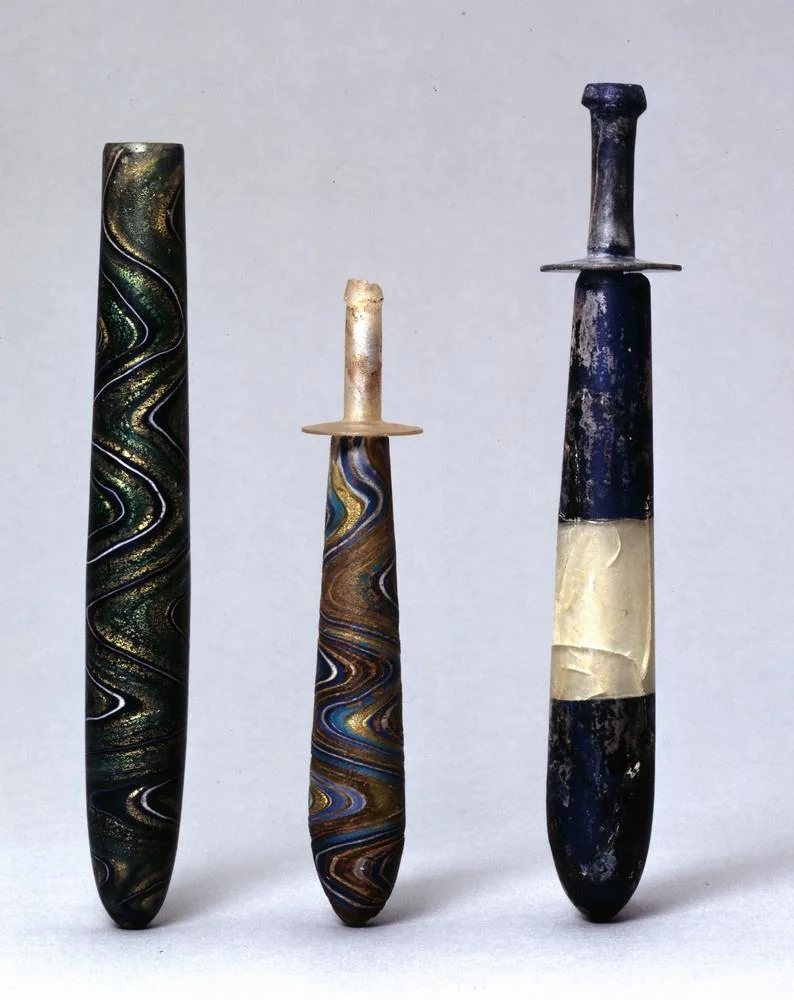
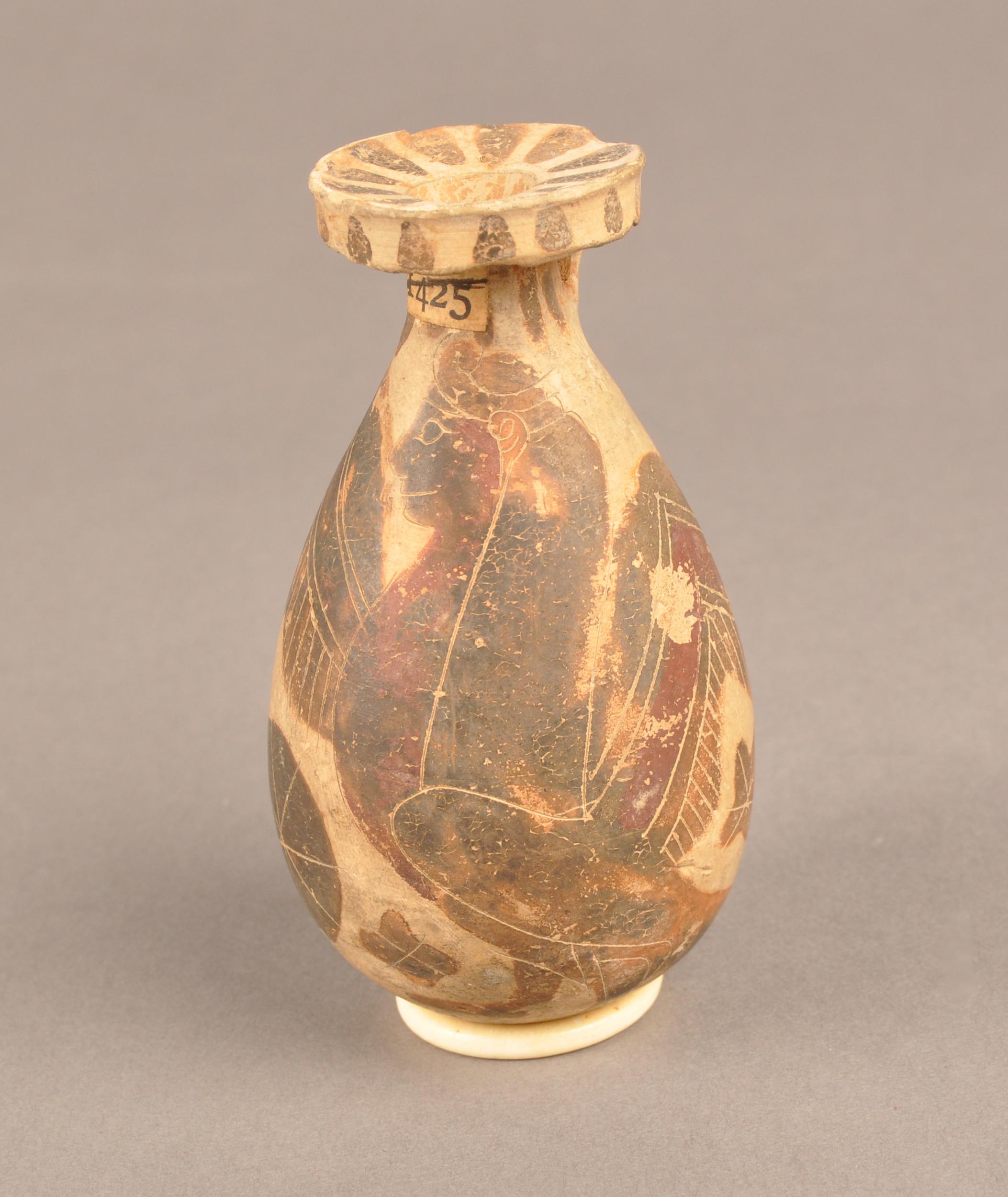
The terms "alabastrum" and "alabastron" refer to the same type of ancient vessel, primarily used for "holding perfumes or oils". In the mystery rite, it's a medical applicator for, pharmakon medicines, subtle difference, those substances were active, and intended to be absorbed by the soft/thin tissues.
Both words are derived from the Greek word "alábastron". "Alabastron" is the more common spelling in English, while "alabastrum" is the Latin form.
- Search for Alabastron at British Museum
What Is an Alabastron?
An alabastron (ἀλάβαστρον) is a small vessel used from the Bronze Age through to late antiquity, primarily associated with perfumed oils and ointments. They typically have:
- No handles or sometimes small side lugs for cords.
- Round or pointed bottoms, which means they were stored upright in stands, niches, bags, or slings.
- A narrow neck and opening, often flared or pinched to control pouring or dipping.
- A slender vertical body, sometimes very elegant in shape.
They were made of:
- Alabaster (from which the name derives), a soft stone
- Glass
- Ceramic
- Faience
- Ivory or bone (rare)
- Sometimes even metal, in luxury versions
Plungers or Stoppers?
- Many alabastrons had stoppers, often of wood, wax, cork, leather, or cloth tied with twine. Organic materials rarely survive, which is why they're missing in museums.
- Some glass or ceramic plungers/rods have been found, especially in Hellenistic and Roman contexts. These resemble ancient cosmetic applicators, unguentaria droppers, or medical pipettes.
- The "plunger" might have functioned more like:
- A dabber (to apply oil/perfume to the skin)
- A dropper (for precise dosing of a drug or essence)
- A mixer/stirrer (for shaking or blending thick substances)
- A ritual tool (e.g. to apply unguents/salves to (or inside) a specific body part in a rite)
But many smaller alabastrons may have just been poured or dabbed directly without an insert.
Did All Have Plungers?
Not all alabastrons had plungers, but many probably did, especially for ritual or high-value contents. The absence in archaeological finds is likely due to:
- Material decay (wood/leather doesn’t last)
- Post-use repurposing
- Museum curation choices (non-integrated items are sometimes stored separately)
What's Probable: plungers were common, and we’ve just lost the record of many.
Were Alabastrons Used Only in Temples or Rites?
Definitely not. But also definitely yes—they were used in both contexts:
Everyday Use
- Used by both men and women for:
- Applying perfumes
- Massaging oils before or after bathing
- Skin treatments, sometimes even medicinal balms
- Found in graves, often as grave goods, which might suggest symbolic value in the afterlife.
- Sometimes carried as part of a toiletry kit.
Sacred / Ceremonial Use
- Strong connections to:
- Mystery cults (e.g. Eleusinian rites, Dionysian rites)
- Sexual mystery rituals (which might include applications of aphrodisiacs or hallucinogens)
- Funerary rituals, especially where perfumed oils were poured or smeared on the body
- Ritual christing and initiation practices
- Substances associated: opium, henbane, mandrake, myrrh, nard, tyrian purple, resins, even snake venoms
Their small openings suggest careful dispensing, which aligns well with precious or dangerous substances.
What Would the Plunger Be Made From?
Most likely materials:
- Glass – sometimes found with matching alabastrons
- Wood – especially olive, juniper, or cedar (symbolically resonant woods)
- Ivory or bone – rare, elite versions
- Possibly reed (in Egypt, like early kohl applicators)
Length?
- Likely as long as the vessel body, sometimes slightly shorter
- Long enough to reach the bottom, unless the vessel was mostly poured out
Some may have spatulate tips, others rounded, hollow, or dropper-like ends.
No standard length is preserved today because even glass ones often shatter.
Those that survive are usually incomplete or displayed without context.
Use in Sexual Rites?
Alabastrons as devices for applying medicinal substances (or perhaps capturing sexual fluids)
- Mystery cults such as those of Dionysos or Isis combined sex / drugs / music / poetry to achieve the sacred.
- Small-mouthed vessels with ritual association may have:
- Held semen, menstrual blood, vaginal secretions, or psychoactive anointments
- Been used on the womb, forehead, genitals, or tongue during rites
- Some alabastrons may be designed to fit intimately (e.g. phallic plungers or shape)
This is not mainstream scholarship (in 2025) but is consistent with esoteric interpretations (see LadyBabylon) of oracular rites, especially among Gnostics, Orphics, and Egyptian-influenced initiatory traditions.
- Skinnier top rim diameters can be ~2.80 centimetres. The average diameter of a penis is around the same.
- Seems there were many alabastron types, some for serious ceremony/rites with the skinny tops (which may have fit into skinny places), and some for home use for applying perfumes.
DIMENSIONS: Typical Ranges
| Feature | Size Range | Notes |
|---|---|---|
| a. Rim diameter (outer lip) | 2.5 – 6 cm | Wider in ceramic or alabaster vessels; often flared or flat-lipped to allow tying of stoppers or for fingertip dabbing. |
| b. Mouth opening (internal) | 0.3 – 2.5 cm | Narrower for oil/drug control; glass vessels often under 1 cm. Many are just wide enough for a slender rod or dabber. |
| c. Base bulb (widest body point) | 3 – 7 cm | Some squat, some elongated; Hellenistic glass types can taper more extremely. |
| d. Vessel height | 8 – 20+ cm | Small ones under 10 cm for personal use; taller alabasters for funerary or ritual. |
| e. Plunger length (if full-length) | 6 – 18 cm | Estimated based on matching vessel heights. Plunger must reach most of the internal chamber. |
| f. Plunger width | 0.2 – 0.5 cm | Thin enough to enter the mouth; sometimes with slightly wider or spatulate tip. |
Notes on Plungers
Most recovered plungers (or rods):
- Are glass, bone, or wood (usually gone)
- Appear slightly shorter than full vessel height, to avoid protrusion
- Are sometimes solid, sometimes hollow (dropper-style)
- Tapered or bulb-tipped ends may help in dabbing or dipping thick unguents
Museum

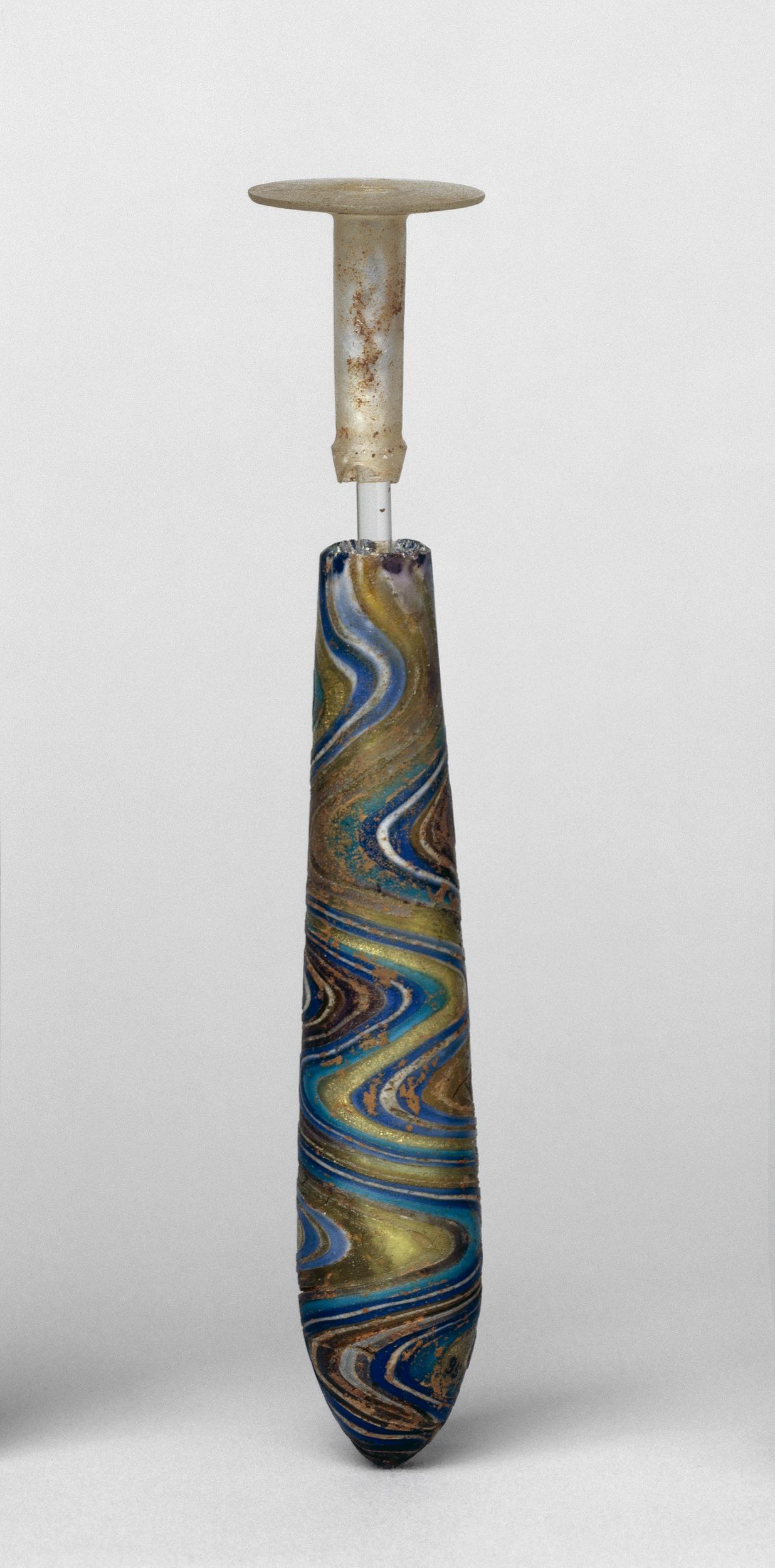
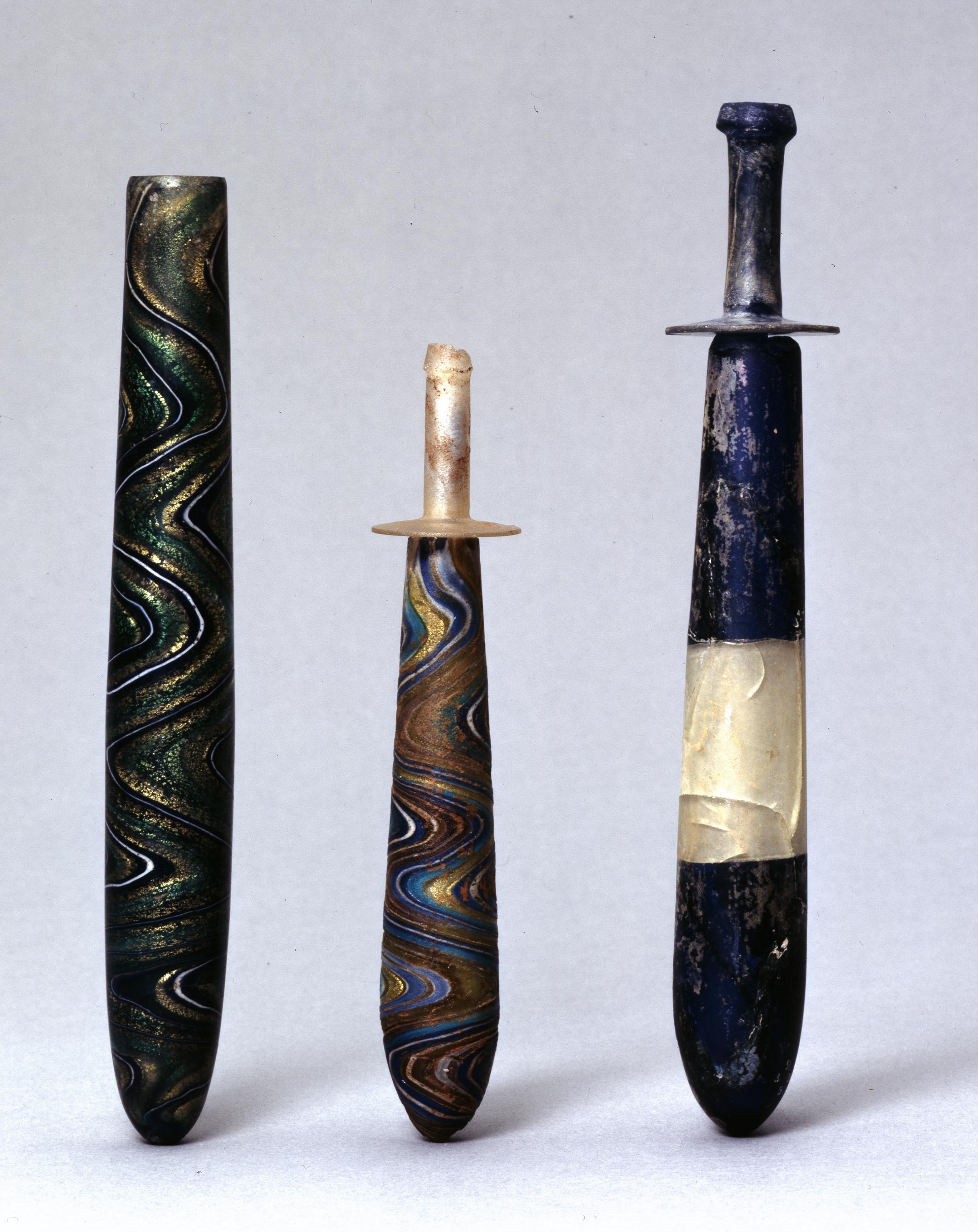

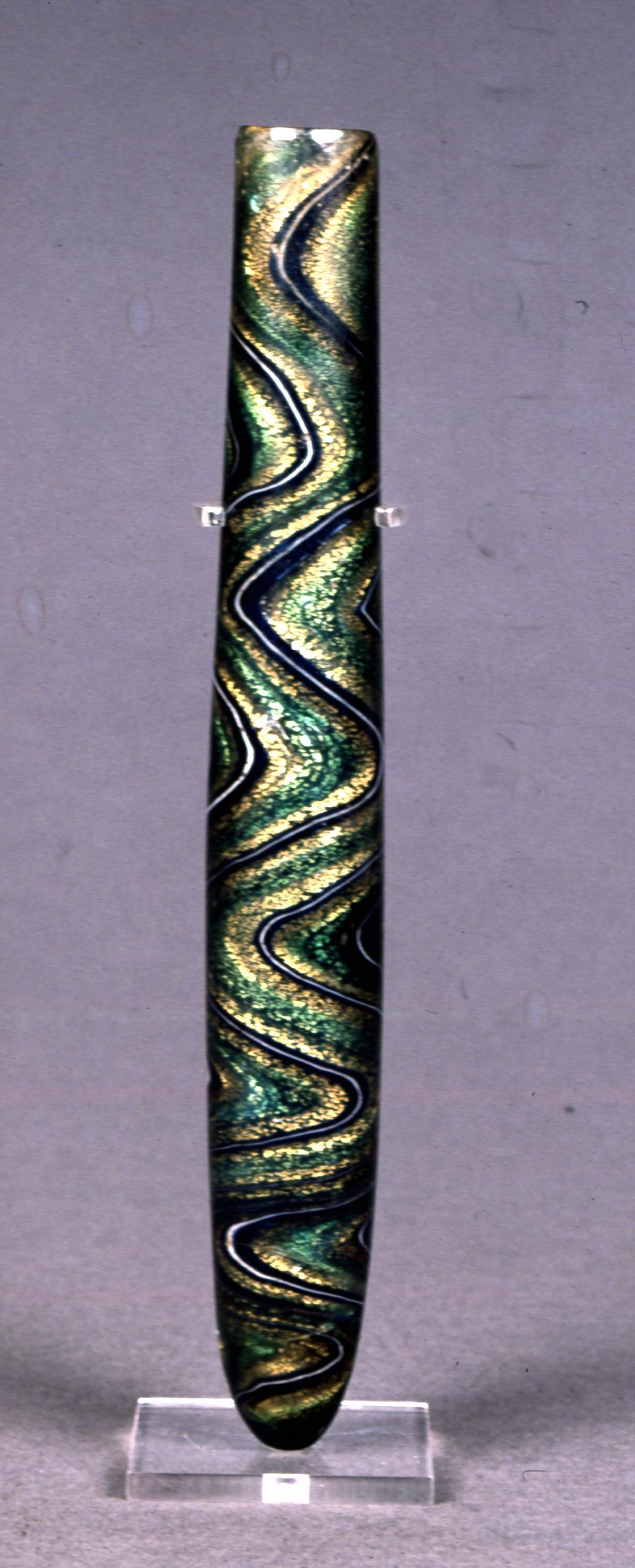
© The Trustees of the British Museum. Shared under a Creative Commons Attribution-NonCommercial-ShareAlike 4.0 International (CC BY-NC-SA 4.0) licence.
Glass alabastron; stripes of translucent blue, white, turquoise, brown and gold foil between two colourless layers; neck colourless; fusiform body broadest near the pointed base; body decorated with wavy stripes descending from top to bottom (stripes are arranged in three groups of polychrome bands combed into a wavy pattern); from pin-prick to medium sized bubbles, some spherical, others lentoid; body core-formed; top and surface finished by grinding and polishing; cylindrical neck made from separate piece of cut and ground colourless glass, its lower end bevelled, rim broad and flat; small bubbles; neck probably cast by the lost-wax technique; perforated then cut, ground and polished.
Made in: Alexandria (Egypt) (probably)
Africa: Egypt: Iskandariya, el- (Governorate): Alexandria (Egypt)
Materials
- glass, gold
Technique:
- core-formed (body), ground, polished, bevelled, perforated, lost-wax cast
Dimensions
- Thickness: Thickness: 0.20 - 0.60 centimetres
- Diameter: Diameter: 2.80 centimetres (rim)(rim)
- Diameter: Diameter: 0.90 centimetres
- Diameter: Diameter: 2.20 centimetres
- Height: Height: 11.20 centimetres (body)(body)
- Height: Height: 3.50 centimetres (neck)(neck)
- Height: Height: 14.30 centimetres
Bibliographic references
- Barag 1985a / Catalogue of Western Asiatic glass in the British Museum, Volume I (147)
- Tait 1991 / Five Thousand Years of Glass (pl.66)
Condition: Fair
A note about glass color technology
Real gold is a fundamental element in color glass . The periodic table of elements was conceptualized in a Siberian glass factory. All color glass is a formula of pure elements and sand. Borosilicate and soda lime glass are the two most common base forms. Gold will bring rich amber color, silver will make pearl white to a ghost yellow. Iron = red. Cobalt = blue. Chromium gives you green.Conclusion and Remaining Open Questions
When considering the alabastron in the context of the mysteries, for sexual rites of applying a medicated salve or ointment (thanasemon or otherwise), to a priestess or to an initiate, to produce or apply the visionary communion drug that is then given to the initiate... See Breakdown of the Mystery for more context on Alabastron use in this respect.
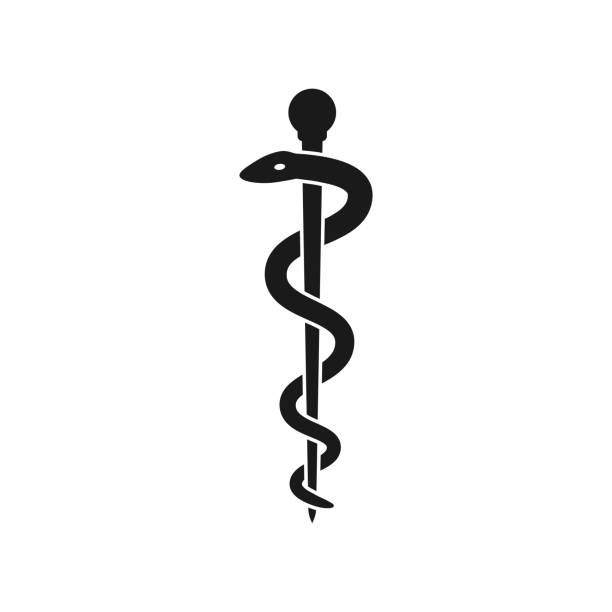
an alabaston plunger with those venom medicines
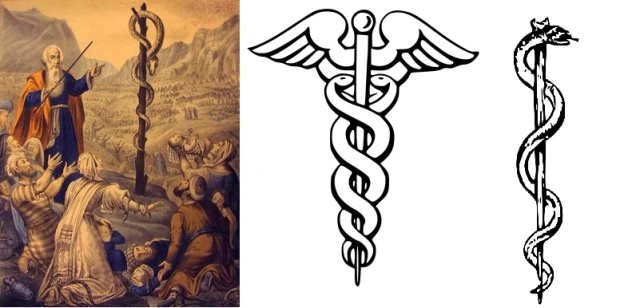
In the biblical story of Moses and the Burning Bush, God instructs Moses to throw his staff (or rod) on the ground, and it transforms into a snake. Moses, initially frightened, then grabs the snake by the tail, and it reverts back to a staff. This miracle is a sign to the Israelites that God has appeared to Moses. Later, the Israelites are afflicted with poisonous snakes, and God instructs Moses to create a bronze serpent on a pole, which would heal those who looked at it
See Also
An alabastrum from 500 BCE was tested for drugs. Positive for opium. "The most recent subject is an intriguing vase in the Yale Babylonian Collection inscribed in four ancient languages (Akkadian, Elamite, Persian, Egyptian) to Xerxes I (d. 465 BCE). This study presents the clearest comprehensive evidence yet that opiates were a broader part of ancient Egyptian society and mark the first time that the contents of an inscribed Egyptian alabastrum have been identified through scientific techniques."